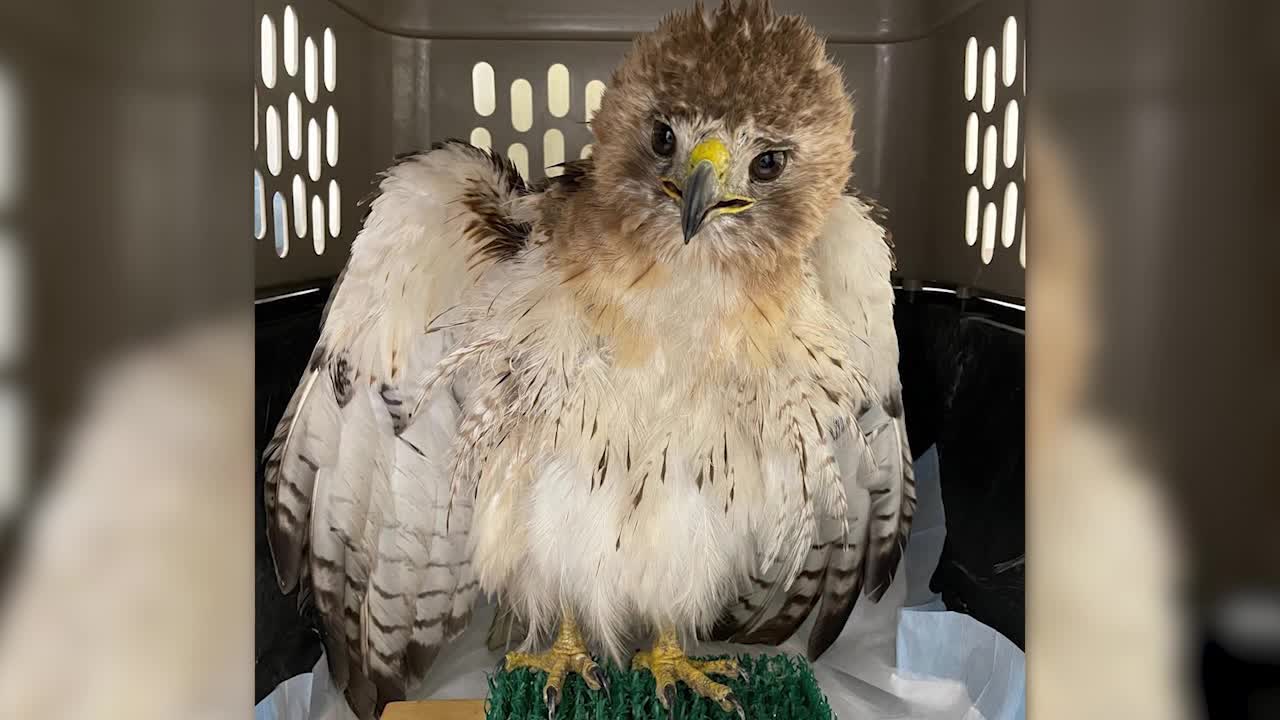The Raptor Center’s 30,000th patient released into the wild
[anvplayer video=”5143424″ station=”998122″]
Thursday marked a historic day for The Raptor Center at the University of Minnesota. Its 30,000th patient was released back into the wild.
The red-tailed hawk appeared ready to return to its natural habitat after more than two months of healing.
The raptor was admitted into the Center’s clinic in August after becoming entangled in poultry netting.
“The people who found her responded very quickly and they did exactly what they should do—they contacted The Raptor Center and then we responded pretty quickly as well,” said Lori Arent, the Center’s assistant director. “The sooner that bird can get help, the better the outcome is going to be.”
The bird’s struggle in the netting caused significant soft tissue injuries to both of her wings. It took about six weeks of rehabilitation before her caretakers felt confident she would heal well.

“It took a little bit longer than we thought and that was because of where the damage was based,” said Arent. “In both cases, it was on the leading edge of her wing which is one of the most crucial areas for a bird to maintain full function.”
She went through a reconditioning program and test flights before a release date was set. The hawk was released at the Lake Rebecca Park Reserve, which is part of the Three Rivers Park District, near where she was found.
“She holds a territory and that territory is one that she plays a very important role in,” said Arent, who described the release as “pure joy”.
The Raptor Center’s co-founder Dr. Patrick Redig, who is now retired, had the honor of releasing the red-tailed hawk back into the wild.
“She’s gorgeous, she’s beautiful, absolutely wonderful and that’s what I want to see is a good strong flight,” he said as she flew away. “I’ve done it and seen it uncountable times, it never gets old. It’s thrilling, it’s exciting and it’s what The Raptor Center exists for.”
Dr. Redig added, “I think it says something about the staying power The Raptor Center has.”
Since it opened in 1974, the Center has seen a 10-fold increase in annual clinic admissions and treated more than 1,000 raptors in 2021. The Center does about 250 releases every year.
“At the time we started The Raptor Center in the early 70’s, it was a different time with regard to how we as people related to our environment,” said Dr. Redig.
He reflected on the growth of community support and engagement through the years, which helped lead to increased protections for the predators.
“That was my goal was to get people more educated about what raptors were and what their value was and their beauty and get them to be something regarded as treasures,” said Dr. Redig.
Raptors still face hazards including soccer nets, cars, power lines and Christmas lights. The Center’s work includes collecting critical information about the birds and their environments, plus public education.
Some raptors that are unable to return to their natural habitats stay with the Center and serve as ambassadors. About 150,000 people visited The Raptor Center each year before the pandemic.
“It’s building back towards that,” said Dr. Redig. “We have all of our students come through, both domestic students and we’ve had a lot of students from abroad over the years too.”